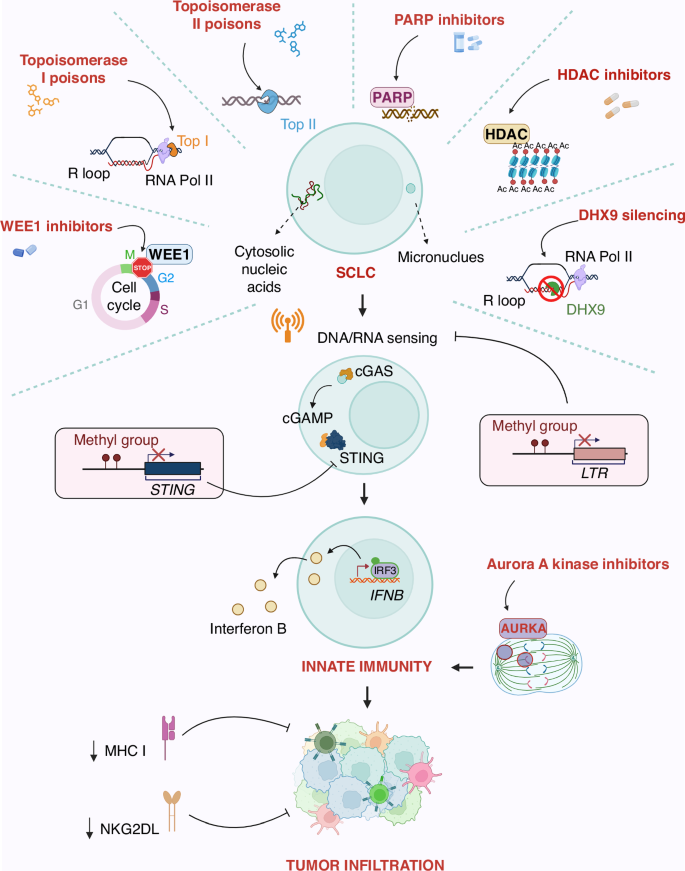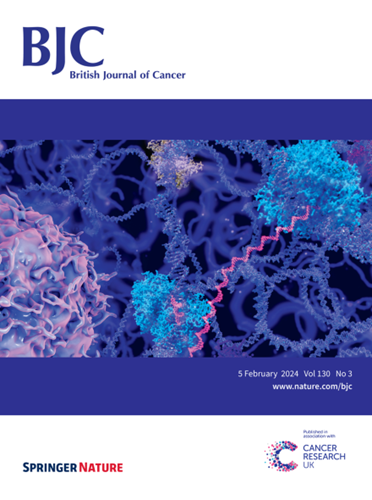Stimulation of cGAS-STING pathway as a challenge in the treatment of small cell lung cancer: a feasible strategy?
IF 6.4
1区 医学
Q1 ONCOLOGY
引用次数: 0
Abstract
Lung cancer has a significant incidence among the population and, unfortunately, has an unfavourable prognosis in most cases. The World Health Organization (WHO) classifies lung tumours into two subtypes based on their phenotype: the Non-Small Cell Lung Cancer (NSCLC) and the Small Cell Lung Cancer (SCLC). SCLC treatment, despite advances in chemotherapy and radiotherapy, is often unsuccessful for cancer recurrence highlighting the need to develop novel therapeutic strategies. In this review, we describe the genetic landscape and tumour microenvironment that characterize the pathological processes of SCLC and how they are responsible for tumour immune evasion. The immunosuppressive mechanisms engaged in SCLC are critical factors to understand the failure of immunotherapy in SCLC and, conversely, suggest that new signalling pathways, such as cGAS/STING, should be investigated as possible targets to stimulate an innate immune response in this subtype of lung cancer. The full comprehension of the innate immunity of cancer cells is thus crucial to open new challenges for successful immunotherapy in treating SCLC and improving patient outcomes.


刺激 cGAS-STING 通路是治疗小细胞肺癌的挑战:可行的策略?
肺癌在人群中的发病率很高,不幸的是,大多数病例的预后都很差。世界卫生组织(WHO)根据表型将肺癌分为两种亚型:非小细胞肺癌(NSCLC)和小细胞肺癌(SCLC)。尽管化疗和放疗取得了进展,但小细胞肺癌的治疗往往因癌症复发而失败,这凸显了开发新型治疗策略的必要性。在这篇综述中,我们描述了构成 SCLC 病理过程特征的遗传景观和肿瘤微环境,以及它们是如何导致肿瘤免疫逃避的。SCLC中的免疫抑制机制是理解免疫疗法在SCLC中失败的关键因素,反之,这也表明应该研究新的信号通路,如cGAS/STING,作为刺激这种亚型肺癌先天性免疫反应的可能靶点。因此,全面了解癌细胞的先天免疫至关重要,它将为免疫疗法成功治疗SCLC和改善患者预后带来新的挑战。
本文章由计算机程序翻译,如有差异,请以英文原文为准。
求助全文
约1分钟内获得全文
求助全文
来源期刊

British Journal of Cancer
医学-肿瘤学
CiteScore
15.10
自引率
1.10%
发文量
383
审稿时长
6 months
期刊介绍:
The British Journal of Cancer is one of the most-cited general cancer journals, publishing significant advances in translational and clinical cancer research.It also publishes high-quality reviews and thought-provoking comment on all aspects of cancer prevention,diagnosis and treatment.
 求助内容:
求助内容: 应助结果提醒方式:
应助结果提醒方式:


